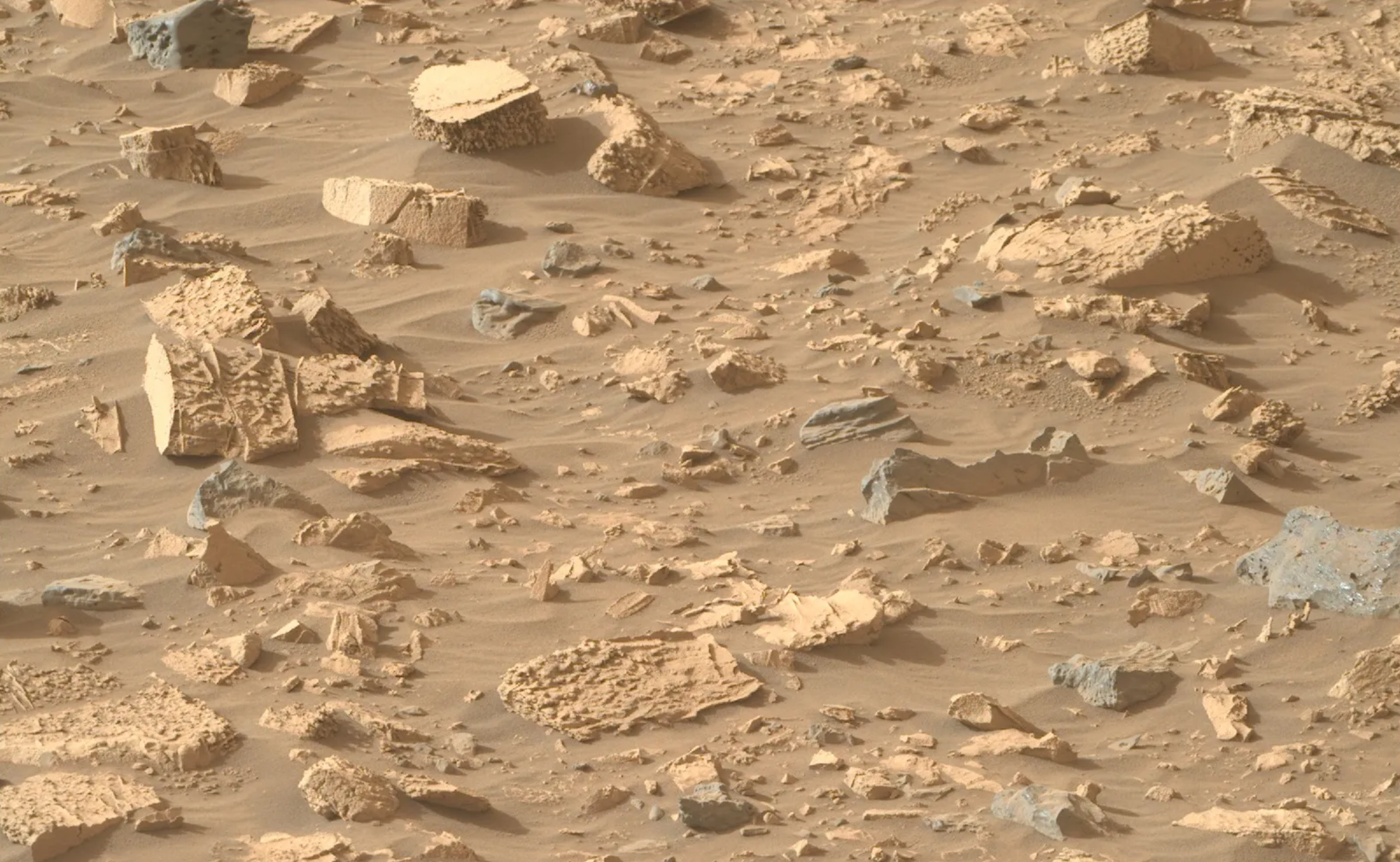By Joshua Shavit
Copyright thebrighterside

Jezero Crater has become one of the most exciting places in the search for signs of past life on Mars. Since landing in 2021, NASA’s Perseverance rover has been exploring the crater’s ancient river system and examining the rocks that once settled in its waters.
A new study focuses on an area called the Bright Angel formation, where unusual minerals and traces of organic carbon have been found together in ways that hint at once-dynamic chemistry—and maybe even biology.
The Bright Angel formation sits along Neretva Vallis, a channel that once fed into a large delta. Here, the rover has been studying fine-grained mudstones and thicker conglomerates. These rocks are thought to have been laid down by flowing water more than three billion years ago.
Their colors range from reddish hues, rich in oxidized iron, to lighter tans and greys. Instruments show that they contain less water bound in minerals than other sediments nearby, suggesting subtle differences in their history.
Perseverance used its suite of tools—including SHERLOC, PIXL, SuperCam, Mastcam-Z, and ground-penetrating radar—to examine the rocks in detail. These instruments detect minerals, measure grain size, analyze chemical makeup, and even identify organic molecules. Together, they revealed textures and chemical patterns unlike anything the rover had seen before.
One of the standout discoveries in Bright Angel mudstones is the presence of tiny features scientists nicknamed “poppy seeds” and “leopard spots.” These are small nodules and reaction fronts that are enriched with specific minerals. Nodules are packed with iron, phosphorus, and zinc in proportions that match minerals such as vivianite, a blue iron phosphate common on Earth in water-rich sediments. The leopard spots show rims rich in phosphate and cores that contain sulfur, nickel, and iron sulfide, possibly greigite.
Even more intriguing is the detection of organic carbon in the same rocks. Using Raman spectroscopy, Perseverance identified a spectral signal known as the G-band, a telltale feature of organic matter. The strongest signals came from a site called Apollo Temple, where vivianite and greigite were also most abundant. Other areas, such as Malgosa Crest, showed weaker signals or none at all.
Michael Tice, a geobiologist from Texas A&M University and co-author of the study, explained why this pairing matters: “They showed evidence of chemical cycling that organisms on Earth can take advantage of to produce energy. And when we looked even closer, we saw things that are easy to explain with early Martian life but very difficult to explain with only geological processes.”
The patterns suggest that after the sediments were deposited, chemical reactions took place within the rocks. These reactions involved the reduction of iron and sulfate, processes that can be fueled by organic matter. On Earth, microbes commonly drive this type of chemistry by “breathing” rust and sulfate while consuming carbon. The result is the formation of minerals such as vivianite and greigite, along with changes in rock color from red to pale.
But living organisms are not required for such reactions. Laboratory experiments show that organic compounds, even if delivered to Mars by meteorites, can promote the same transformations without biology. What makes the Bright Angel discovery so compelling is the combination of organic carbon with minerals that usually form in low-temperature, water-rich environments—the same settings where microbes often thrive on Earth.
Tice stressed that the evidence stops short of proving life: “Living things do chemistry that generally occurs in nature anyway given enough time and the right circumstances. To the best of our current knowledge, some of the chemistry that shaped these rocks required either high temperatures or life, and we do not see evidence of high temperatures here.”
The Bright Angel formation paints a picture of a once-wet environment where flowing rivers and shallow lakes deposited layers of fine mud. Fluids later moved through these sediments, sparking chemical reactions at relatively low temperatures. Minerals formed, iron was cycled between oxidized and reduced states, and organic matter was transformed.
“It’s not just the minerals, it’s how they are arranged in these structures that suggests they formed through the redox cycling of iron and sulfur,” Tice said. “On Earth, things like these sometimes form in sediments where microbes are eating organic matter and ‘breathing’ rust and sulfate. Their presence on Mars raises the question: could similar processes have occurred there?”
If microbes once lived in Jezero’s waters, they might have left behind mineral signatures rather than body fossils. The nodules and reaction fronts could be exactly that type of indirect evidence. NASA has a term for features like these: potential biosignatures. They don’t prove life, but they are worth closer study.
Perseverance collected a core sample from the Bright Angel formation called Sapphire Canyon. This tube, now sealed and stored aboard the rover, is a prime candidate for return to Earth in a future mission. Scientists are eager to study it in laboratories with far more sensitive instruments than can be sent to Mars.
Back on Earth, researchers could measure the isotopic composition of the organic matter, study mineral grains at the nanoscale, and even hunt for possible microfossils. They could also better determine whether high-temperature processes might have played a role, or if biology is the most plausible explanation.
One of the most striking aspects of the discovery is how similar these Martian features are to certain sediments on Earth. Ancient rocks on our planet also show evidence of microorganisms cycling iron and sulfur with organic matter. The difference is that Earth’s rocks have been altered by tectonic activity and heating, erasing many of the fine details. On Mars, with no plate tectonics, the record is better preserved.
“What’s fascinating is how life may have been making use of some of the same processes on Earth and Mars at around the same time,” Tice said. “We see evidence of microorganisms reacting iron and sulfur with organic matter in the same way in rocks of the same age on Earth, but we’d never be able to see exactly the same features here. It’s a special and spectacular thing to be able to see them like this on another planet.”
If these Martian rocks are returned to Earth, scientists will be able to probe one of the deepest questions in science: did life ever arise beyond our planet? Even if the minerals prove to be purely chemical, they reveal how Mars once hosted water-rich environments capable of complex chemistry. That chemistry is a critical step toward habitability.
For future missions, knowing where organic matter and redox-active minerals occur could guide the search for samples most likely to preserve traces of biology.
Beyond Mars, the findings show that simple chemical building blocks can set the stage for energy-rich environments, raising the odds that similar processes may unfold on other worlds.
Research findings are available online in the journal Nature.
Like these kind of feel good stories? Get The Brighter Side of News’ newsletter.



